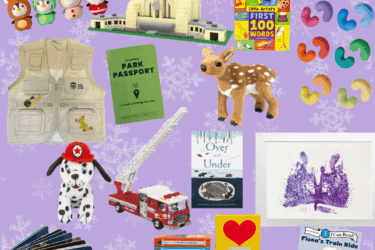Kids learn through modeling and repetition, and gratitude is no exception. The more often your children see or hear you showing thanks, the more seeds you plant in their garden of appreciation.
In their book, Making Grateful Kids: The Science of Building Character,
Jeffrey J. Froh and Giacomo Bono note that young children first practice thankfulness as politeness, rather than genuine gratitude, which comes when they are old enough to appreciate why others are offering them kindness.
The words please and thank you are building blocks of gratitude and for many of us they come easily when our children are learning to talk. If your kids are a bit older though, take a day to observe your interactions, not just with your children, but with everyone you speak with. How often do you use the “magic words?”
Looking for more ways to instill an attitude of gratitude in your little ones? Here are a few to consider.
ROSES AND THORNS
Sometimes called simply “Highs and Lows,” this is a practice of each participant sharing one positive thing and one negative thing that happened during the day. Consider offering roses last to end on a positive note, or up your gratitude game by taking time as a family to consider what good may have come from the “thorns.” Don’t forget to express thanks for the people with whom you can share these highs and lows.
FIVE PENNIES … OR BEADS OR SMALL STONES
Have your child think of five things he or she is grateful for and allow each small treasure to represent one of those things. Keep them in a special spot or precious container, or take them to school in a pocket as a reminder throughout the day.
DOWNWARD SOCIAL COMPARISONS
Rather than lamenting how everyone else has it better than we do, an upward comparison that can breed dissatisfaction, Froh and Bono suggest we bring our attention, and that of our children, toward friends and family whose plans haven’t worked out as they’d hoped. These types of downward comparisons encourage empathy. With that empathy, comes greater appreciation for the things we have. Kids also begin to see that everyone has a different perspective, and that their circumstances could spark envy in others.
BASKET OF THANKS
Keep a basket or other container in a prominent place in your home, along with index cards and pens or colored pencils. Encourage family members to stop by and write a quick note of thanks for people, pets and things in your home throughout the day.
THANK YOU CARDS
Writing thank you notes cultivates thoughtfulness and gratitude, and can become a regular habit. Author and mom Sage Cohen writes and sends thank you cards daily.
“My son is very aware of my gratitude practice,” she says. “In my household, writing thank you notes is like brushing your teeth, going to bed on time, and being gentle with the cats. It’s both modeled and required, but in a friendly and integrated way. It’s just a rhythm of life that we co-create and enjoy together.”
Rather than an occasional obligation, thank you notes can be an opportunity for family members to talk regularly about what and who they appreciate, as well as a time to consider what our words of thanks mean to the recipient.
GRATITUDE JOURNAL
Help your children keep a daily list of people and things for which they are grateful. Spending time to write or draw things we appreciate focuses our attention on them in a way that can magnify their value. Entries can be a simple drawing or more detailed written entries such as “I am thankful for… because…”
As a parent, in any season, you can plant seeds of appreciation and watch gratitude grow in your life, and in the lives of your children.





